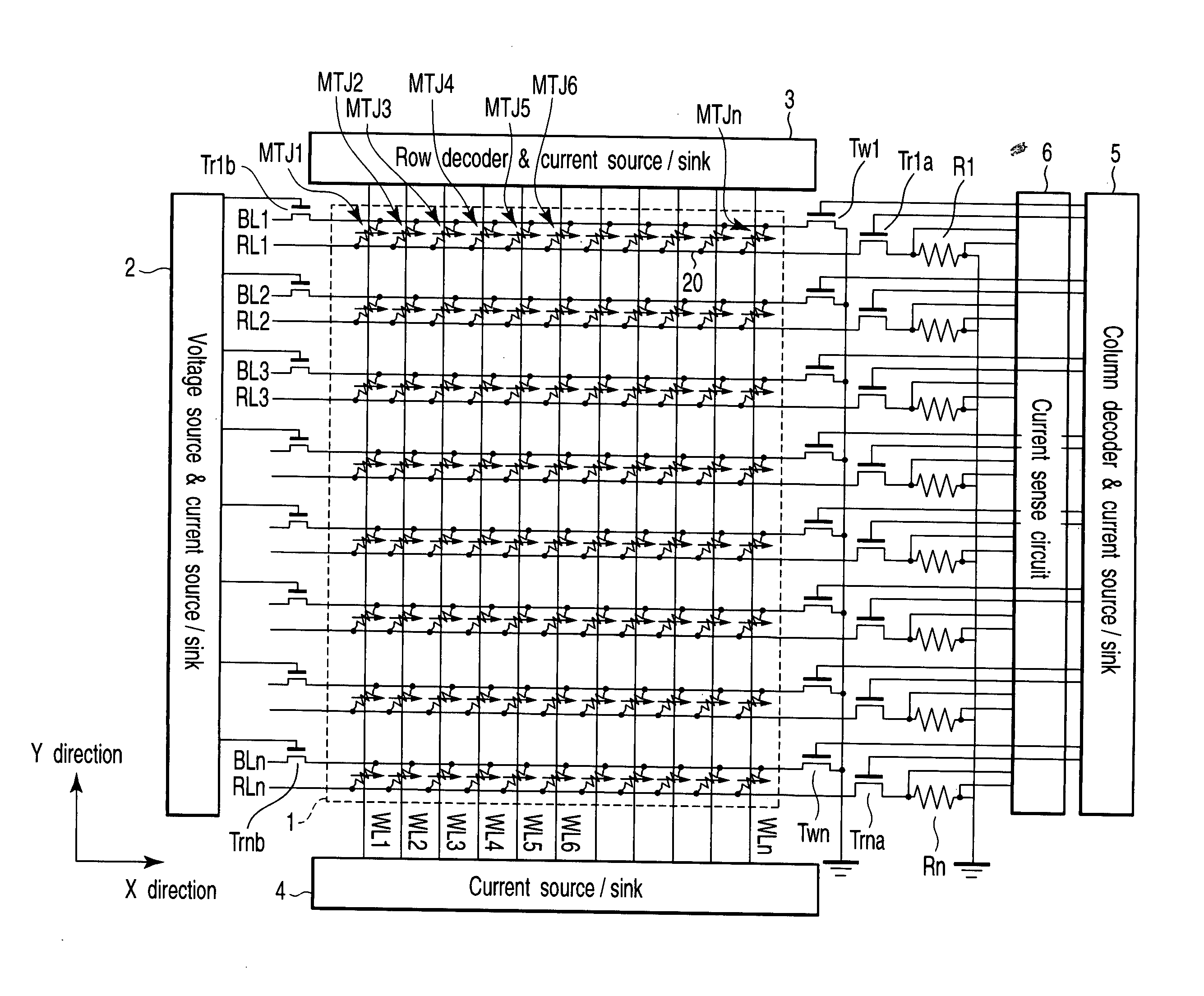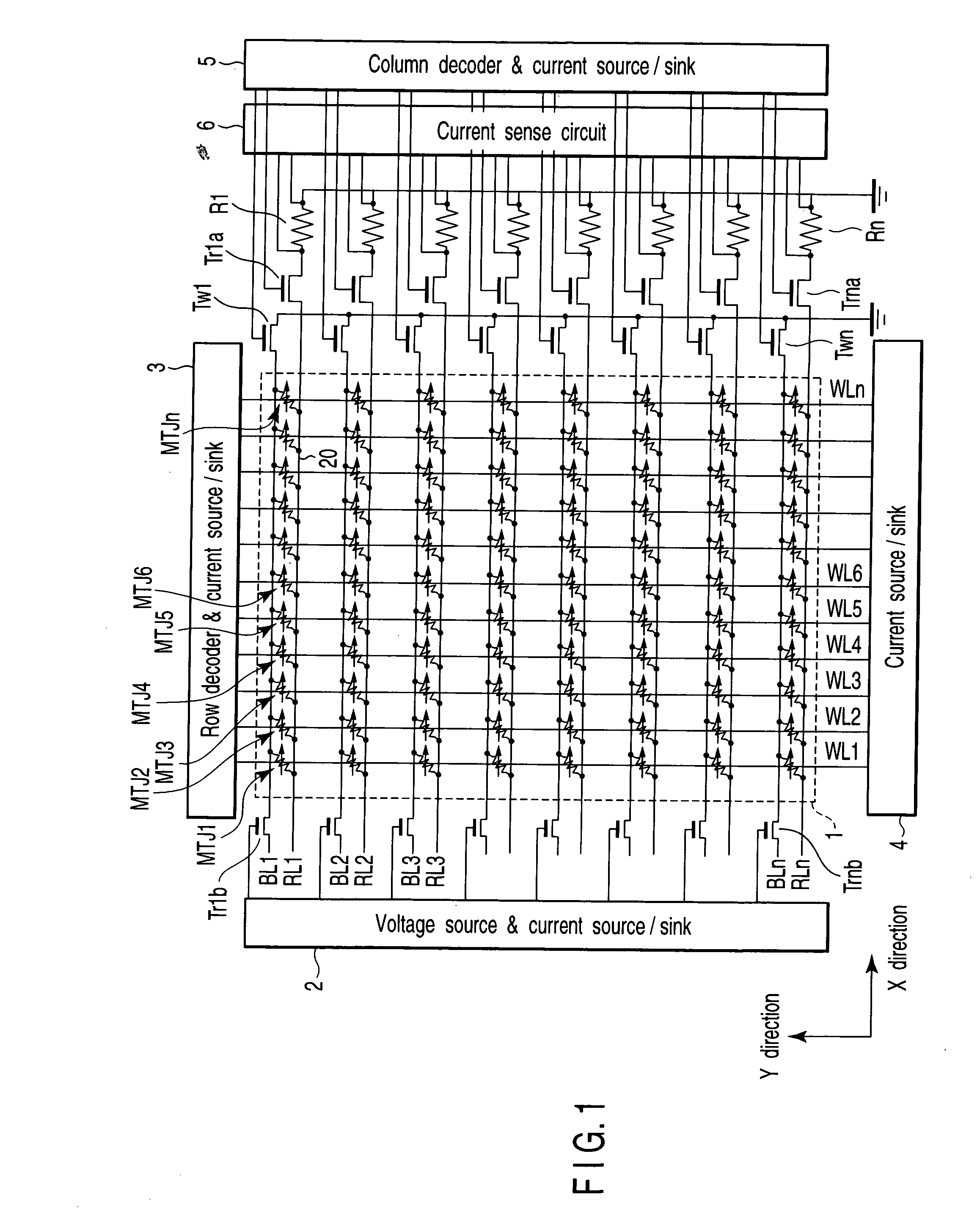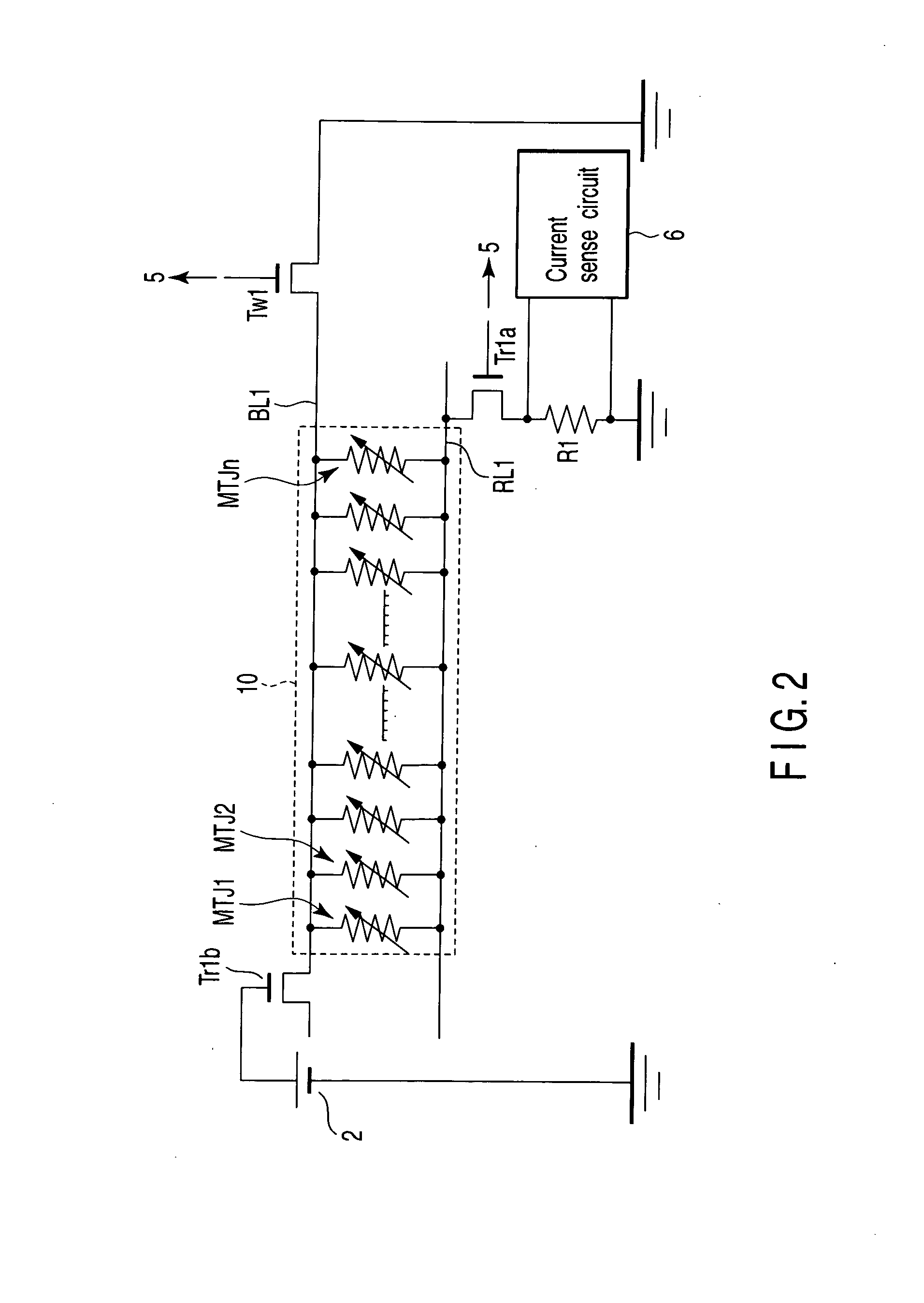Data read method of magnetic random access memory
- Summary
- Abstract
- Description
- Claims
- Application Information
AI Technical Summary
Benefits of technology
Problems solved by technology
Method used
Image
Examples
first embodiment
[1] First Embodiment
[0109] In the first embodiment, a ladder-shaped magnetic random access memory (MRAM) using magnetic tunnel junction (MTJ) elements will be described.
[1-1] Structure
[0110]FIG. 1 is a block diagram of the memory cell array of a magnetic random access memory according to the first embodiment of the present invention. FIG. 2 is a view showing one block of the memory cell array shown in FIG. 1. FIG. 3 is a sectional view of the magnetic random access memory according to the first embodiment of the present invention. The structure of the magnetic random access memory according to the first embodiment of the present invention will be described below.
[0111] As shown in FIG. 1, a plurality of bit lines BLn (n=1, 2, 3, . . . ) and a plurality of read lines RLn (n=1, 2, 3, . . . ) run in the X direction. A plurality of word lines WLn (n=1, 2, 3, . . . ) run in the Y direction (e.g., direction perpendicular to the X direction). MTJ elements MTJn (n=1, 2, 3, . . . ) are a...
second embodiment
[2] Second Embodiment
[0192] In the second embodiment, a ladder-shaped magnetic random access memory using giant magneto-resistance (GMR) elements will be described.
[2-1] Structure
[0193]FIG. 23 is a sectional view of a magnetic random access memory according to the second embodiment. As shown in FIG. 23, in the second embodiment, GMR elements are used in place of the MTJ elements of the first embodiment. The structure of the magnetic random access memory according to the second embodiment, which is different from the first embodiment, will mainly be described below.
[0194] A GMR element includes free layers 21 and 23 serving as soft magnetic layers and a low-resistance conductive layer 22 serving as a nonmagnetic layer. Since the conductive layer 22 is sandwiched between the free layers 21 and 23, an antiferromagnetic coupling structure is formed so that antiferromagnetic coupling by exchange interaction occurs. The GMR element will be described in the eighth embodiment.
[0195] In...
third embodiment
[3] Third Embodiment
[0237] In the third embodiment, a ladder-shaped magnetic random access memory using GMR elements will be described, as in the second embodiment. In the GMR element of the second embodiment, the conductive layer is sandwiched between two free layers. In the GMR element of the third embodiment, however, the conductive layer is sandwiched between a free layer and a fixed layer.
[3-1] Structure
[0238]FIG. 37 is a sectional view of a magnetic random access memory according to the third embodiment. As shown in FIG. 37, in the third embodiment, the lower free layer of the GMR element of the second embodiment is replaced with a fixed layer 31. Hence, the GMR element includes the fixed layer 31, a free layer 23, and a conductive layer 22 sandwiched between the fixed layer 31 and the free layer 23. The remaining structure is the same as in the second embodiment, and a description thereof will be omitted.
[3-2] Manufacturing Method
[0239] The manufacturing method accordin...
PUM
 Login to View More
Login to View More Abstract
Description
Claims
Application Information
 Login to View More
Login to View More - R&D
- Intellectual Property
- Life Sciences
- Materials
- Tech Scout
- Unparalleled Data Quality
- Higher Quality Content
- 60% Fewer Hallucinations
Browse by: Latest US Patents, China's latest patents, Technical Efficacy Thesaurus, Application Domain, Technology Topic, Popular Technical Reports.
© 2025 PatSnap. All rights reserved.Legal|Privacy policy|Modern Slavery Act Transparency Statement|Sitemap|About US| Contact US: help@patsnap.com



